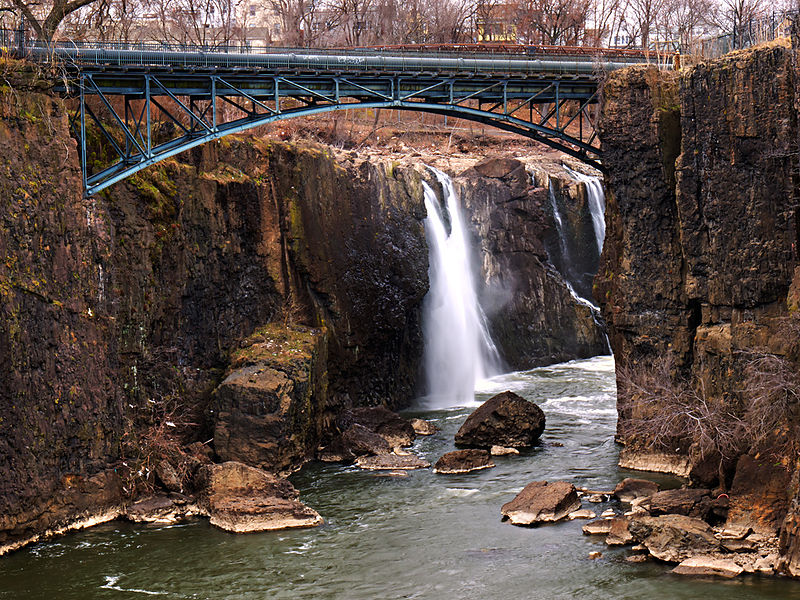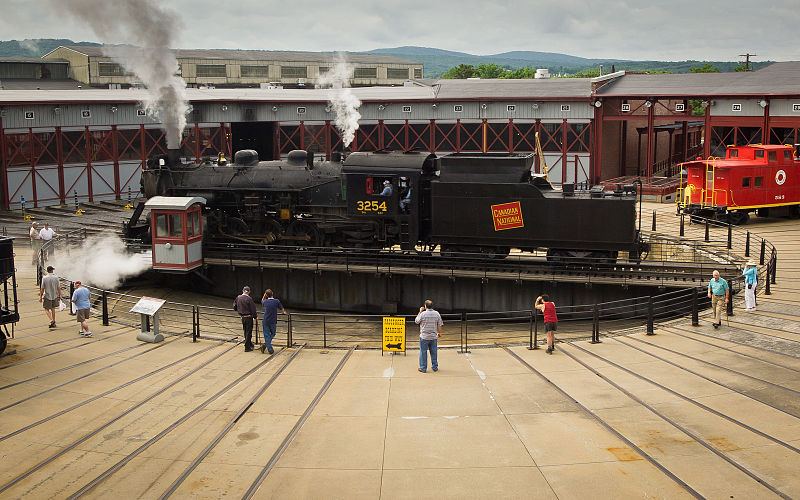The United States has 401 national parks, which are visited by over 275 million people every year. As the National Park Service (NPS) approaches its centennial anniversary in 2016, the agency is reevaluating how parks are used and maintained, Arch Daily reports.
To this end, NPS has joined with the Van Alen Institute and created the National Parks Now competition. This competition fits into the Institute's existing initiative, Elsewhere: Escape and the Urban Landscape, to investigate how built environments create a need for escape. The National Parks Now competition seeks to make parks relevant for a wider audience, especially smaller national parks near urban areas.
Four parks in the Northeast have been chosen as case studies for the competition:
- Sagamore Hill National Historic Site (Oyster Bay, NY) – President Theodore Roosevelt’s estate
- Steamtown National Historic Site (Scranton, PA) – a monument to the steam locomotive
- Paterson Great Falls National Historic Park (Paterson, NJ) – birthplace of American textile manufacturing
- Weir Farm National Historic Site (Ridgefield, CT) – summer estate of artist Julien Alden Weir
National Parks Now asks entrants to propose all types of interventions for these parks, including interactive installations, site-specific education and leisure opportunities, outreach and engagement campaigns, and self-led tours. Any ideas to expand the park-going public, especially those that can be used as a model for other parks, are welcome.
The competition is open to architects, designers, historians, communications professionals, and others.
After an initial phase of competition, four teams, one for each park site, will be selected to participate in a six-month, collaborative research and design process, and will receive $15,000.
A winning team will be chosen after this period and a prototype of their work will be implemented at their site in 2015. See more about the competition here.
Related Stories
Cultural Facilities | Aug 21, 2024
Baltimore’s National Aquarium opens 10,000-sf floating wetland that mimics the harbor’s original tidal marsh habitat
The National Aquarium in Baltimore has opened the National Aquarium Harbor Wetland, a 10,000-sf floating wetland that mimics the Inner Harbor’s original Chesapeake Bay tidal marsh habitat. Located between Piers 3 and 4 on Baltimore’s Inner Harbor, the $14 million project features more than 32,000 native shrubs and marsh grasses.
Mixed-Use | Aug 21, 2024
Adaptive reuse of a Sears store becomes luxury mixed-use housing
6 Corners Lofts at 4714 W Irving Park Road, Chicago, Ill., opened in March of 2024 as a 394,000-sf adaptive reuse project born out of a former Sears store.
Building Materials | Aug 19, 2024
Federal 'buy clean' construction materials label program unveiled
The U.S. Environmental Protection Agency announced a plan for implementing a new label program to boost American production of more climate-friendly construction materials and products. The label program will prioritize steel, glass, asphalt and concrete.
Museums | Aug 19, 2024
The Tampa Museum of Art will soon undergo a $110 million expansion
In Tampa, Fla., the Tampa Museum of Art will soon undergo a 77,904-sf Centennial Expansion project. The museum plans to reach its $110 million fundraising goal by late 2024 or early 2025 and then break ground. Designed by Weiss/Manfredi, and with construction manager The Beck Group, the expansion will redefine the museum’s surrounding site.
AEC Tech | Aug 19, 2024
Harnessing AI to revolutionize architectural design and creativity
Architects are wondering if AI will replace us. For Vessel, the gains offset the fear. We believe there is wisdom in the unattributed quote, “You won’t lose your job to AI. You will lose your job to someone using AI.”
Reconstruction & Renovation | Aug 19, 2024
Movement to protect historic buildings raises sharp criticism
While the movement to preserve historic buildings has widespread support, it also has some sharp critics with well-funded opposition groups springing up in recent years. Some opponents are linked to the Stand Together Foundation, founded and bankrolled by the Koch family’s conservative philanthropic organization, according to a column in Governing magazine.
Government Buildings | Aug 19, 2024
GSA posts new RFI for enabling energy efficiency, decarbonization in commercial buildings
The U.S. General Services Administration (GSA), in collaboration with the U.S. Department of Energy, recently released a new Request For Information (RFI) focused on enabling energy efficiency and decarbonization in commercial buildings. GSA wants to test innovative technologies through GSA’s Center for Emerging Building Technologies.
MFPRO+ New Projects | Aug 16, 2024
At 60 stories, the Paramount multifamily development will stand as Nashville’s tallest high rise
When complete, the 60-story Paramount building, at 750 feet high, will be the tallest high rise tower in Nashville, Tenn., surpassing the city’s current record holder, the 617-foot AT&T Building. The $390 million Paramount project recently launched condo sales after securing more than $230 million in construction financing.
Urban Planning | Aug 15, 2024
New York City begins first large-scale porous pavement installation
New York City is installing its first large-scale porous pavement installation along seven miles of roadway in Brooklyn. The project will keep 35 million gallons of stormwater out of the combined sewer system each year, according to a news release.
Urban Planning | Aug 15, 2024
The magic of L.A.’s Melrose Mile
Great streets are generally not initially curated or willed into being. Rather, they emerge organically from unintentional synergies of commercial, business, cultural and economic drivers. L.A.’s Melrose Avenue is a prime example.



















